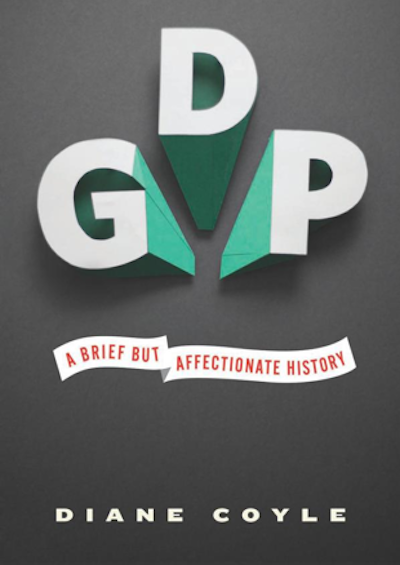Warfare and the Invention of GDP
Quite contrary to current efforts to reflect happiness, GDP was invented to prepare nations better for warfare.
April 6, 2014

Warfare is the mother of invention. Many new technologies that end up in use in civilian life have been spurred by the demands of conflict — and funded by the military.
Among these inventions, ranging from the Internet to Teflon, radar to programmable electronic computers, is Gross Domestic Product. GDP is one of the many inventions of World War II.
But the use of national accounts for the purposes of warfare started much earlier. In 1665, a British scientist and official, William Petty, produced estimates of the income and expenditure, population, land and other assets of England and Wales.
His aim was to measure the whole of the economy in order to assess the country’s resources with regard to its ability to fight a conflict and finance it through taxes. That particular war was the now little-known Second Anglo-Dutch War, which lasted from 1665 to 1667.
Beating the French – with data
Petty wanted to prove not only that the country could bear a higher burden of taxes, but also that it was capable of taking on its powerful neighbors, Holland and France.
In that context, Petty came up with a significant innovation. To keep proper records for the nation as a whole, he applied the tool of double-entry bookkeeping.
Another early set of estimates of what evolved into GDP, prepared by Charles Davenant in 1695, made the aim of his record keeping perfectly clear. It had the title “An Essay upon the Ways and Means of Supplying the War.”
Although it is completely forgotten now, the fact that England had consolidated national income statistics enabled the government to calculate the scope for increased output and tax revenues, a crucial contributory factor in the frequent wars with France.
France strikes back
This approach to national accounting proved to be a major advantage, given that Britain’s larger and seemingly more powerful neighbor France lacked such information.
It was not until 1781 that the French king had similar strategically important economic and financial data. King Louis XVI’s finance minister, Jacques Necker, delivered a famous “compte rendu au roi,” or Financial Summary for the King report to the king, on the strength of the French economy.
This tool finally enabled the king to raise new loans. However, it did not help him avert the French Revolution in 1789, which sealed his fate soon after.
Throughout the 18th century a number of successive statistical pioneers built on these first British attempts. The concept of “national income” may seem clear enough, but measuring it in practice means choosing what to include and exclude, which is surprisingly fuzzy.
The framework evolved over the decades. Later authors emphasized different aspects of the economy. Some — among them the novelist and pamphleteer Daniel Defoe — thought that the key to the nation’s prosperity was increasing trade, both overseas and within the country.
At another time, the debate in coffeehouses and pamphlets centered firmly on the national debt. Between the late 17th and late 18th centuries, the British government frequently published the figures for it. Once again, financing warfare was the motivation.
Fast forward to WWII
Things got really serious when the world was in the throes of the Second World War. Now, nailing down the proper calculations for GDP mattered more than ever before – and on a completely new scale.
In 1940, John Maynard Keynes – the economist today known mostly for his General Theory of Employment, Interest and Money, published a pamphlet on “How to Pay for the War.”
In his essay, Keynes complained about the inadequacy of the statistics available to him for calculating what the British economy could produce with the available resources.
This was anything but the idle pursuit of a brilliant intellectual. After all, his country — the United Kingdom — had been at war with Germany and its allies since the previous year, 1939, and Keynes was working in the Treasury, at the heart of his country’s economic and financial struggle.
Mr. Keynes and warmaking
Given the paucity and poor quality of the aggregate economic statistics, Keynes argued that it was difficult to know what would be available for mobilization and conflict.
Neither was he in a position to understand what would be left over for people to consume — and how much their living standards might need to fall.
Planning for the further war effort also needed much better statistics on how much was produced by individual industries, including what materials they used.
Alas, Keynes wrote, “Every government since the last war (WWI) has been unscientific and obscurantist, and has regarded the collection of essential facts as a waste of money.”
The United Kingdom aside, other countries were separately developing the concept and measurement of GDP during the 1930s. Holland was another pioneer, as were Germany and the Soviet Union.
The U.S. takes over
In the United States, Wesley C. Mitchell, the director of the National Bureau of Economic Research, wrote: “Only those who had a personal share in the economic mobilization for war could realize in how many ways — and how much — estimates of national income covering 20 years and classified in several ways facilitated the World War II effort.”
GDP developed from a tool to enable the war effort into the more peaceful measure we know today when a senior British Treasury official, Austin Robinson, was so impressed by Keynes’s argument in “How to Pay for the War” that he took the next logical step.
He commissioned two young economists, Richard Stone and James Meade, to develop what became the first modern set of national accounts and GDP. These were published with the U.K. government’s budget of 1941.
Keynes’s involvement in these efforts continued. He did not have an official post, but was given an office in the UK Treasury. From there, he oversaw the work and the subsequent establishment of the Central Statistical Office, a new official statistical agency.
The real turn toward the peacetime development of GDP statistics occurred in May 1946, when a Committee of Statistical Experts met at Hunter College in New York. It was tasked to draw up recommendations for collecting national statistics on behalf of the United Nations.
The UN takes over
Before long, the United Nations took on the responsibility for setting international standards of measurement in what is now known as the System of National Accounts (SNA).
The planning that was required during the worldwide military conflict turned out to be of great – and now fully productive — use in the period of rebuilding after the end of World War II.
The data collected proved very valuable for the Truman Administration which, from 1946 to 1952, provided total aid worth an estimated $148 billion (in 2004 dollars).
The devastated countries of Europe depended heavily on Marshall Aid to enable them to survive and rebuild. Throughout that period, everything was in short supply and tracking the use of resources was essential.
But it was in Keynes’s master work, “The General Theory of Employment, Interest and Money,” that GDP figures met their ultimate destiny. The statistics he had wanted developed for the purpose of wartime planning became the building blocks of modern macroeconomic policy.
The history of GDP statistics shows them to be anything but ‘dry’ facts. These days, there is now much talk about the economics of happiness, and how to measure better the things in life we truly care about. However, it is important to remember how far our measurement of the economy has already moved on from its wartime origin.
Editor’s note: This essay was adapted from “GDP: A Brief, but Affectionate History” by Diane Coyle (Princeton, 2014) and was reprinted by arrangement with the publisher and author.
Takeaways
17th century Britain was the first nation to get a close sense of its GDP – to be better prepared for war.
Today’s GDP statistics have their origin in nations’ assessing whether they could go to war, and for how long.
In the Second World War, nailing down the proper calculations for GDP mattered more than ever before.
Keynes’s wartime planning statistics became the building blocks of modern macroeconomic policy.
Quite contrary to current efforts to reflect happiness, GDP was invented to prepare nations better for warfare.
Read previous

Obama’s Whitewashed History
April 3, 2014
